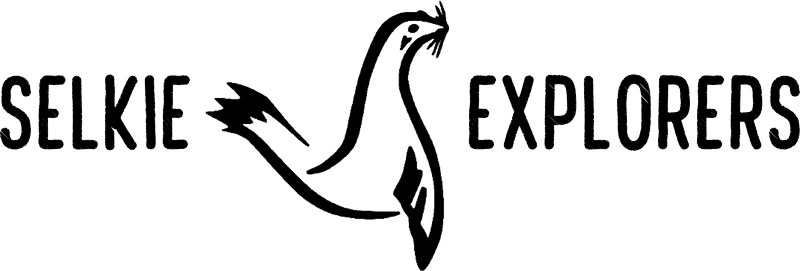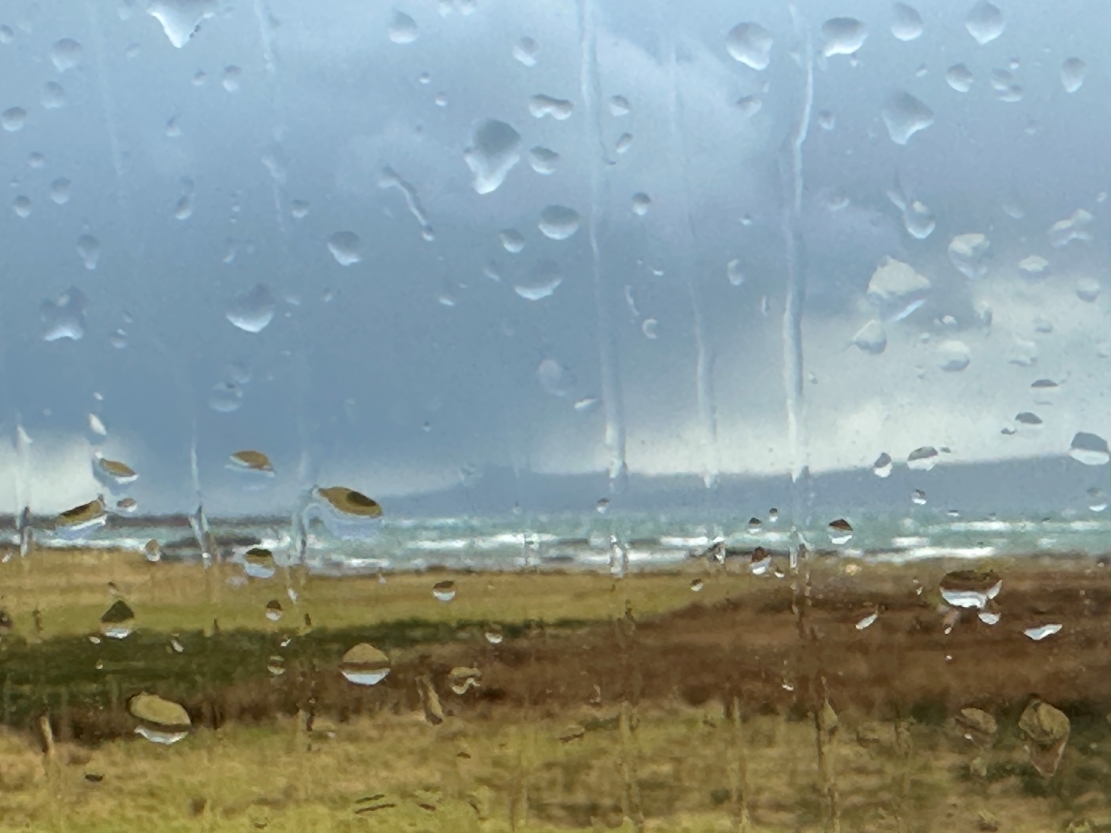Storm Isha is hurling itself at the window. I am gazing over at Eigg, unable to reach home as the ferry is obviously cancelled for today.
Betting I don’t want to be out in this? You would be correct.
I am returning from a Megabusing visit to London to spend time with teenhood friends, some whom I’ve not seen for a quarter of a century, not since starting to sail, children, living half our lives. In those days, I was climbing all the time and they have “fond” memories of me, in pubs or at parties, shimmying up walls, across beams and doing pull ups on door lintels (I’m cringing too). Now they ask about sailing and what I do in weather and waves like there are right now looking across the sound of Arisaig to Eigg. Alexandra Lewis, solicitor extraordinaire, has been to Eigg and on Selkie many times with her son Will. She told the enthralled audience about her times on Selkie in bad weather, confused as she wasn’t feeling the brunt of the storm. When asked about this at the time, I had explained that we were in a sheltered anchorage and the gale was pounding on shores on the opposite side of an island, here we were safe. I told this London crew that I’m not doing my job well if everyone is terrified and we are abandoning ship at any moment. Coastal cruising is about planning and adapting to the ensure safety and enjoyment. Of course, if you are on a long crossing, then it is tricky to predict what weather you are going to meet. There is plenty of information available of when are historically the better times to cross. You can select your season and the daylight hours, if like me you prefer higher latitudes: plenty of light during summer hours or moonlight for darker times. But for sure weather is becoming harder to predict. It’s been a long time since I was having to do any type of crossing or voyage that a long-range forecast didn’t shed some light on.
When I first started sailing, we listened to the shipping forecast for UK waters and there were faxes available, a printed copy of the synoptic chart would be pinned up on marina notice boards. In Antarctica, we were able to get a Navtec printout of the latest pressure contours drawn by the Chilean Navy. Fronts were embellished by which ever metrological officer was on duty and it was a gut feeling that ultimately made the decision about staying or going.
Once I was skipper of my own boat, I used my HF/SSB radio to talk with a weather router. Word of mouth introduced me to a man based in the Canaries, Rafael from La Rueda, and I would tune in as we inched south down the Atlantic crossing to Brazil. We could be listening in for up to an hour before he would get he got round to us and we would hear what was going on, where and suggestions of avoidance tactics.
When Rich Haworth and I ended up going to South Georgia, just the two of us, we went to the top of the list. There was a chap soloing across the Atlantic at the time and he would usually get Rafael’s first attention but a few times he called us up first. We were meant to be a full boat of six but various injuries and life events whittled it down to just two. I was already in Tierra del Fuego on Ada preparing for the voyage. As the project started to look shaky, I put through a call to Rich, (in the days when you had to go to a call centre). The conversation went something along the lines of “do you still want to go if just the two of us?” “Yeah! Let’s do it!” We left the Falklands in a forty-knot westerly and held onto our hats. For five days we were blown over immense waves in a rock and roller ride to that hundred-mile island. Rich would do the radio work and I would helm, hoping to make the boat as comfortable as possible during the call. I got it completely wrong during one radio schedule, confusion amidst the waves, the wind, the compass and the dark, I managed to go through all degrees of the compass!
I upgraded to a satellite phone and software which talked to my laptop, a great clunky machine, on which I was able to download synoptic weather charts. I would spend hours pouring over these and referencing a slim book, “How to read weather faxes”. These skills I’ve transferred to the new and modern apps now available. I still listen to the coastguard, sending out their inshore water forecast but now my preferred app is PredictWind. It has a basic free package but with an Iridium Go! and a fair amount of cash for the standard or professional package on their Offshore App, you can see it all! It has been particularly useful for my Norwegian trips. Sailing in winter means there are are a few factors that need serious consideration and getting the timing for a crossing as favourable as possible is good on all fronts, from personal safety to financially imperative. So still sitting here, I can see a break in the strong winds coming up tomorrow early. Calmac and Milligan transport are all keeping an eye and plans are afoot, or rather, afloat for sailings in that window. Perhaps I will get home tomorrow afterall!

